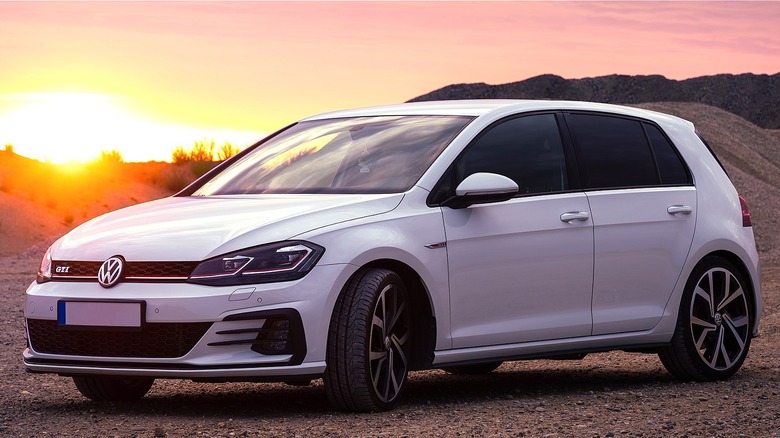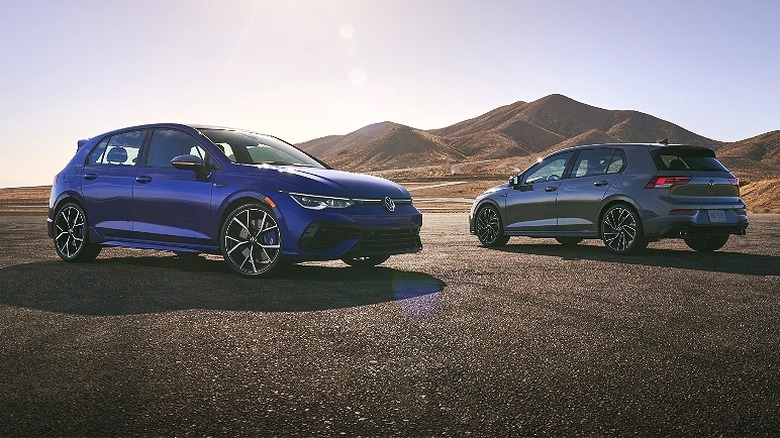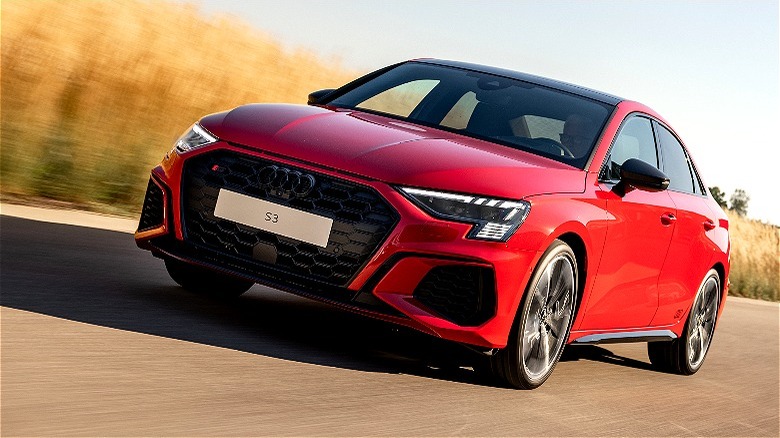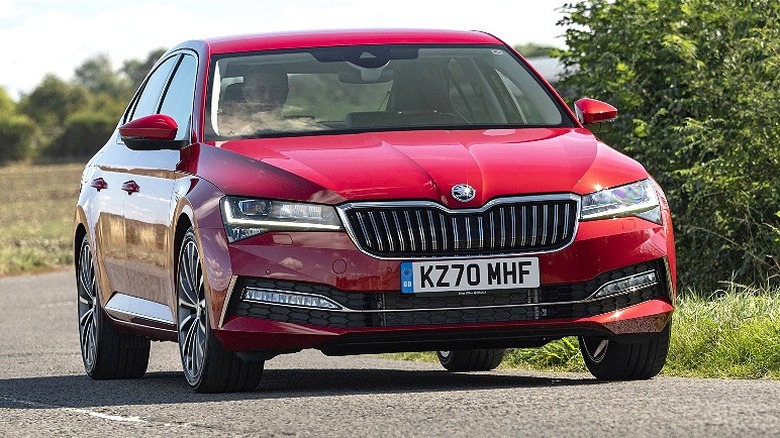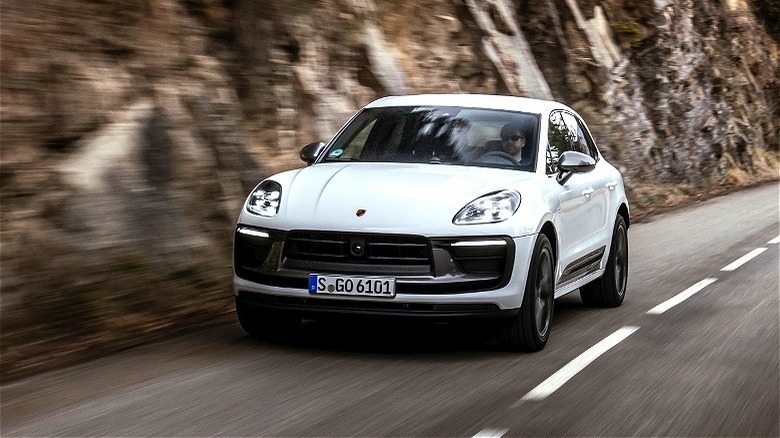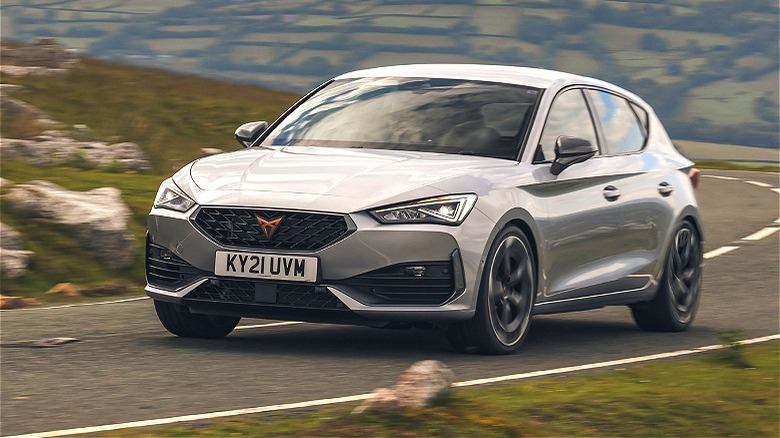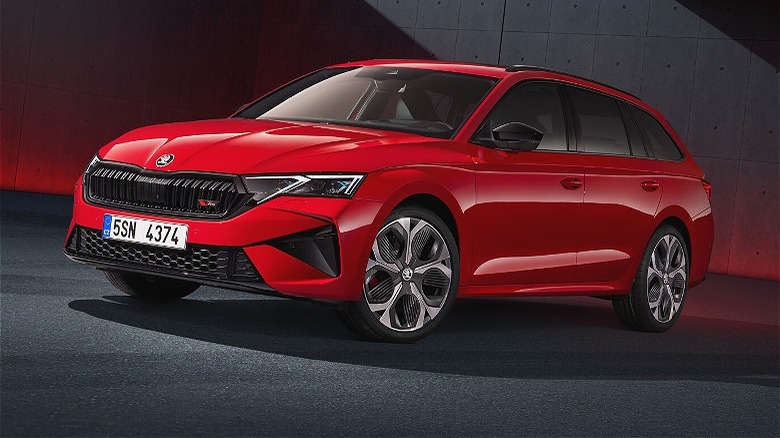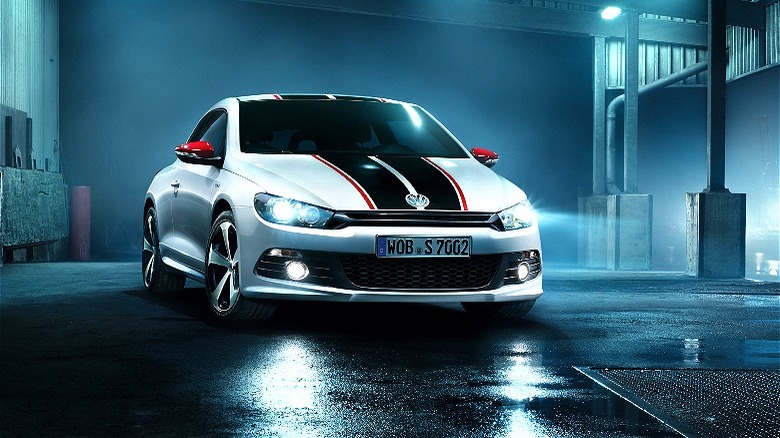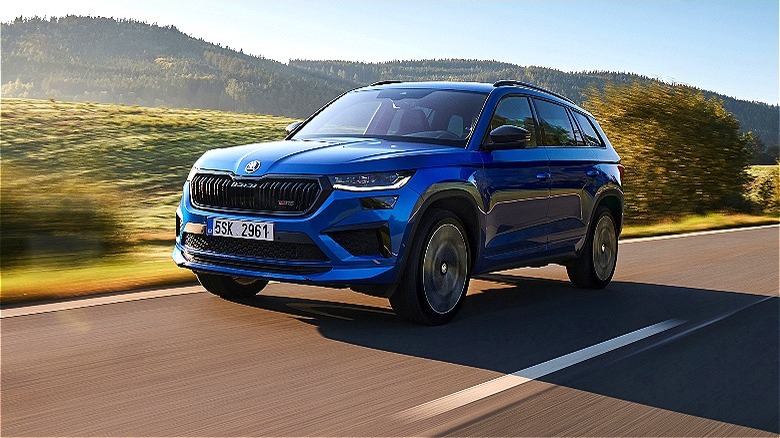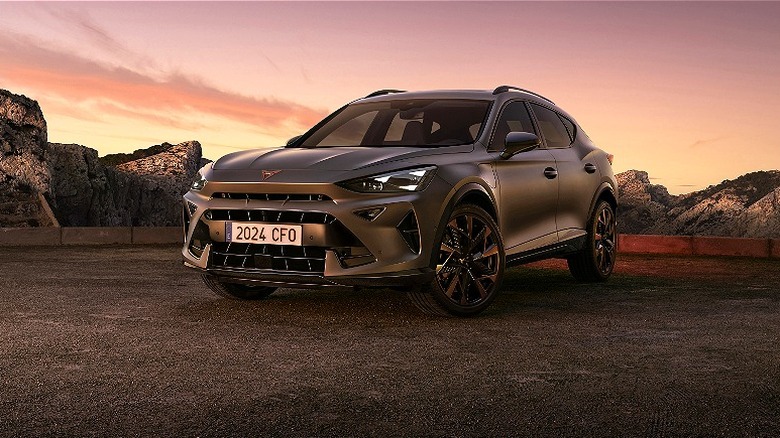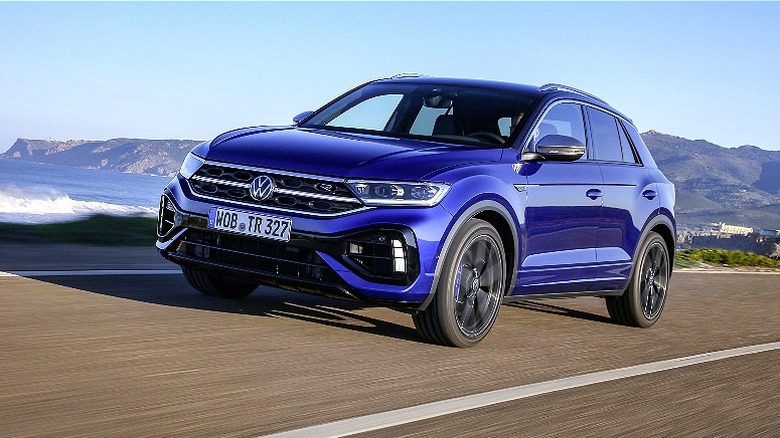10 Of The Most Notable Cars Powered By The Legendary EA888 Engine
Around two decades ago, Volkswagen was getting quite experimental with its powertrains. In addition to finding a way to solve packaging restraints of front-wheel-drive cars with the VR6, VW dipped its toes in various and curious engine layouts. These included the W12 and W16, both of which went on to power some truly exquisite cars; the unreliable-but-intriguing W8; and the five-cylinder version of the VR6, dubbed V5.
Yet, as with many things in life, it's often the simpler stuff that ends up proving the best. That certainly is the case with VW's powertrains, as the EA888 remains one of the very best ones on offer. Compared to other powertrains, the EA888 is positively pedestrian, being only a 2.0-liter turbocharged four-banger with a cast-iron block, but that cast-iron block is especially important, as it's given the EA888 the reliability and the tune-ability that's made it such a popular system. Even without mods, this compact turbo lump has done service in some notable Volkswagen vehicles, even some unexpected ones.
1. Volkswagen Golf GTI and R
What better way to kick off any conversation about the EA888 than mentioning what has to be its most notable application. The Golf GTI and R have both been using a version of the EA888 for the better part of a decade, replacing the older EA113 that was used by the likes of the Mk5 GTI.
In the most recent Mk8 derivatives of the Golf, the EA888 is plenty powerful, dispatching 241 horsepower to the GTI's front wheels, and 315 horsepower to all four of the Golf R's wheels, through the buyer's choice of either a six-speed manual transmission (well, until recently anyway), or the good old, amusingly flatulent DSG dual-clutch automatic.
One of the best aspects of the EA888 is its tune-ability, and it is in the Golf GTI and R where this ability is mostly exploited. Despite the changing times, and VW focusing on electrified automobiles, it's awesome to see this old stalwart is still doing its job keeping the Golf on the map as among the best hot hatchback options. Not to mention keeping the aftermarket going with a whole bunch of solutions to add extra power.
2. Audi S3
The Golf GTI isn't the only way to have compact four-cylinder thrills from the VW Group. For something with a little more premium flare and panache, there's always the Audi S3 (here's SlashGear's review). While it's not quite the R S3 and its five-cylinder engine, the S3 offers a lot more of something that performance cars seem to be forgetting about more and more: performance you can actually take advantage of and use to the fullest.
Instead of a raging turbo five-cylinder, the S3 uses a version of the EA888 with 306 horsepower and 295 pound-feet of torque, similar numbers to what you'd get in the Golf R. However, the S3 is nicer on the inside, slightly more practical thanks to the sedan body, and compared to the R S3, at least, more affordable. With Quattro AWD coming standard, it's a demon in the corners, too.
The latest S3 is a seriously underrated performance car, and it unfortunately continues to live in the shadows of some other compact performance cars. On the other hand, it's one of the only ones left on the market, so it is definitely not one that should be ignored.
3. Skoda Superb
It is really a shame North America doesn't get to enjoy the Skoda Superb, as by so many counts, it is one of the most complete automotive packages anywhere in the world right now. It's good-looking, practical, cheaper than the related VW Passat, and well-equipped. The most recent third generation spent some experience points to give the Superb a new perk: It can be a performance car, too.
The first and second generation Superb both offered a six-cylinder powertrain, but they weren't really dedicated performance cars. However, with the third generation, VW introduced a version with the EA888, putting out 280 horsepower, which was sadly knocked down to 265 horsepower on the latest fourth generation car. Paired up with AWD, it allowed the Superb TSI to accelerate to 60 mph in around five seconds. Launch control-enabled, of course. A massive family sedan that can keep pace with a Porsche 718? Sign us up.
4. Porsche Macan
With the Porsche Macan is about to get replaced by an all-electric version, but the regular gas-powered Macan (with us since 2014) is still a part of the Porsche lineup for the foreseeable future. Despite being a decade old, Porsche has kept it fresh with not just one, but two pretty major facelifts, the most recent of those happening in 2021.
Along with some fresh styling and an improved GTS model, one of the most notable changes to the Macan lineup was the introduction of the Macan T. The T is intended to be the entry-level model, with the T standing for Touring. Instead of the surprisingly fiery turbo V6 under the hood, the Macan T makes do with a 2.0-liter turbocharged four-cylinder, just like the base Macan. You couldn't possibly guess what internal code it carries.
With 261 horsepower and 295 pound-feet of torque, neither the base Macan nor the Macan T are as rapid as the S or the GTS, but they both still have plenty of shove, and the added benefit of less weight over the front axle. Further proof that the EA888 is an extremely versatile powertrain.
5. Cupra Leon
A few years ago, the VW Group made a controversial decision to split Spanish automaker Seat's performance arm Cupra into its own separate brand, only to then claim that Cupra will effectively replace Seat, until eventually backtracking and deciding that both will still co-exist alongside one another, at least until the end of the 2020s. The Cupra lineup now spans several different models, but the Leon has been a staple for years.
On paper, it's some of the best value you can get out of a hot hatchback. The Leon is based on the same platform that underpins the Mk8 Golf, and as expected, it also uses a version of the EA888. But, when equipped correctly, the Leon can put out 300 horsepower for less than the equivalent Golf GTI, which produces 245 horsepower. What's more, the Cupra Leon is one of the only remaining hot hatchbacks to be offered as a station wagon, and the wagon version is also available with AWD, earning it some true jack-of-all-trades points. There's a PHEV and even a smaller 1.5-liter engine with 150 horsepower available, but for maximum performance, the EA888-equipped Cupra Leon is definitely the one to have.
6. Skoda Octavia RS
Another way to have Golf GTI performance in a more value-focused package has always been the Skoda Octavia RS, or vRS in the United Kingdom. Since the first Octavia in the late '90s, the RS/vRS has been the liftback counterpart to the Golf GTI, with a wagon eventually being added to the lineup for, once again, more points in the jack-of-all-trades department.
Powering the Octavia RS, predictably, is a version of the EA888 2.0-liter turbo I4, putting out 242 horsepower and allowing for a brisk zero-to-60 time of around 6.5 seconds. While it can't exactly keep pace with your AMG A35s and Focus RS, it's still plenty brisk for most people, and it's altogether aimed at a more grounded, sensible hot hatchback buyer, evident in the plentiful practicality it offers. What's more, you can have the Octavia RS with a plug-in hybrid powertrain, but really, the EA888 version is the one.
7. Volkswagen Scirocco GTS
Another unfortunate casualty of the crossover uprising, the Volkswagen Scirocco was revived back in 2008 as a modernized take on the original formula: a sporty FWD coupe with Golf (and some Passat) underpinnings, aimed at the more adventurous hatchback buyer who still needed something relatively practical and sensible, but also fun when the conditions demanded it.
Over the course of the third-gen Scirocco's production run, there were multiple variants and engines on offer, including a Scirocco R with over 270 horsepower. While that car made do with the EA113, the GTS, which was introduced with the 2014 facelift and carried on until the end of production, received the EA888.
Putting out 214 horsepower from the 2.0-liter turbo four, the GTS is a bit like a semi-skim Scirocco R, but that's no bad thing. No torque steer to really worry about, and a lot more of the power is actually usable. With a zero-to-60 time of around 6.5 seconds, the GTS is plenty speedy, and of course, there's plenty of headroom for more power if that's your thing.
8. Skoda Kodiaq RS
When Skoda finally released its first-ever large SUV, the Kodiaq, back in 2016, it was an instant hit. It was priced like a much smaller SUV, while still offering ample amounts of space and practicality and a third row seating for good measure. Plenty of powertrains were on offer, but none were quite as interesting as the Kodiaq RS, or vRS.
The initial run of Kodiaq RS used diesel power, with a 2.0-liter TDI turbodiesel putting out 237 horsepower and a beefy 368 pound-feet of torque, making it a fantastic tow rig. However, when the time came to facelift the Kodiaq, Skoda decided that diesel power was yesteryear, and swapped out the TDI in favor of the EA888 TSI 2.0-liter unit, making a still very healthy 245 horsepower, but a slightly more pedestrian 272 pound-feet of torque. Still, the TSI carried the benefit of a lot less weight (over 130 pound lighter than the diesel version), better efficiency, more refinement, and even better performance.
With standard AWD, the Kodiaq can hold its own on gravel and mud, but it can also keep pace with a lot of hot hatchbacks, including the ones that use the same powertrain. Coupled with the space inside and the excellent equipment, the Kodiaq RS really can be all things to all buyers.
9. Cupra Formentor
Ever since Cupra spun off into its own brand, Volkswagen has had the devil's own job convincing people it really is a separate brand that, while it does have its roots in Seat, is aimed at a different sort of buyer. Cupra then set out to prove this further by launching its first-ever standalone Cupra model, the Formentor.
Even though it-s a standalone model, the Formentor is little more than a crossoverfied Leon. We're not sure why exactly the Formentor needs to exist, but we do know it packs a punch. Like most of the other cars in the Cupra lineup, you can have a small 1.5-liter four-cylinder, a plug-in hybrid, or the full fat 2.0-liter EA888 turbo with 310 horsepower.
That power output is plenty on its own, but paired up with AWD turns the Formentor into a serious rocket ship. Zero-to-60 mph takes less than five seconds, which is in the range of Porsche 718 and Lotus Evora performance. All of that in a small crossover based on the Seat Leon, and thus the Volkswagen Golf. That's some pretty impressive performance squeezed out of the EA888, and more proof we're living in a brave new world.
10. Volkswagen T-Roc R
Over the past few years, Volkswagen has sought ways to expand its R lineup beyond the familiar Golf. Sure, there was an R version of the Passat previously, but that wasn't quite cutting it. Just recently, Volkswagen decided to give some of its SUVs the R treatment. There's the Touareg R with its monstrous plug-in hybrid powertrain, as well as the Tiguan R, but the most interesting one has to be the compact crossover T-Roc R.
The T-Roc R takes up a Golf-sized spot in VW's global crossover lineup, essentially being Europe's Taos. The R version packs the EA888 under the hood, tuned in this case to put out 296 horsepower. That's plenty, especially for a small crossover. When you pair that up with standard AWD, the T-Roc R can propel itself and the occupants to 60 mph in less than five seconds.
By virtue of being a crossover, the T-Roc R also possesses something the related Golf R can't brag about: off-road drive modes. Thanks to the slightly better ground clearance, and simply having the option to select a more terrain-focused drive mode, the driver can prance around in a makeshift factory rally car. It's helpful, then, that the T-Roc R produces the same sort of horsepower you might expect to see in a rally car not too long ago, and even today.
